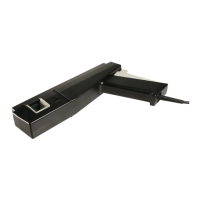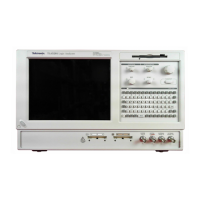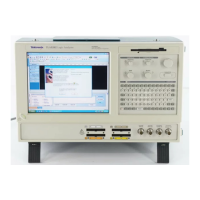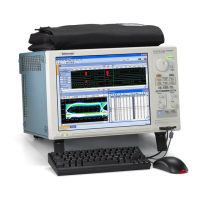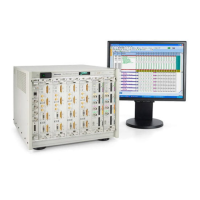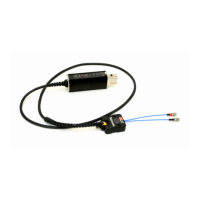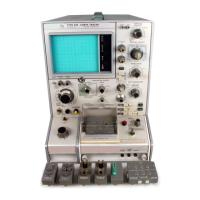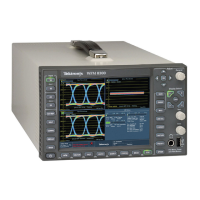Operating Basics Inrush Current Check
NOTE. The USB2.0 specifications recommend that you should test the signal quality for upstream and
downstream traffic. In upstream testing, the application captures the signals transmitted from the device to
the host. In do
wnstream testing, the application captures the signals transmitted from the host to the device.
Downstream testing is performed on ports of a hub. When testing a hub, you need to connect the USB2.0
unit to Tier 6
to ensure the worst case. Each hub level is referred to as a Tier. The hub under test is
connected to the Tier 5, so that you c an test the hub on the Tier 6.
Inrush Cur
rent Check
The applic
ation can perform an Inrush current check to v erify that the unit under test does not draw
current higher than that specified in the USB2.0 specifications when connected to a USB2.0 system. If the
measured current drawn is higher than a specified value, the other USB2.0 devices connected to the bus
may not be able to function properly.
When a unit is c onnected, there is a sharp intake of current followed by a comparatively less s teep decay.
Small humps or perturbations are noticed in the current trace, depending on when the unit resets.
The TDSUSB2 application automatically sets up the oscilloscope. The application gives a direct readout
of Charge (µC) and Capacitance (µF) values. The application displays the details of the results after
comparing the test results with the USB2.0 specifications.
Probe Degaussing
It is mandatory to perform degauss for the current probe before carrying out inrush measurement. You can
refer to the probe manual for the degaussing procedure.
TDSUSB2 Universal Serial Bus Measurements Package 33

